“Can you tell me the way to Somewhere?” wrote the poet Walter de la Mare in his children’s verse about a mysterious and never-identified land whose sole occupants are a cat and a mouse. His poem, called “Somewhere”, never explains where it is, but people who think they may know are squabbling over it right now.
It’s not called “Somewhere” in real life, of course. It’s called Transnistria, and there are fierce disagreements over whether or not it’s part of Moldova (it is…sort of). Or even if it really exists, at least as a real, extant or simply separate entity. Its inhabitants do not comprise solely a car and a mouse, either. Moldovans say the place is real. Vladimir Putin seems to think that it’s really a part of Russia, but then he thinks that about everywhere, even if he seems genuinely disinterested in trying to acquire it.

For the ruthlessly ambitious the world presents a wealth of opportunities, although it’s true to say that they generally involve rather a lot of blood being spilled. It’s seldom been the blood of the power-hungry themselves, of course. When they’re on the way to the top, people may well offer to die for them, but in the case of the over-ambitious, the object of their affection tends to take them seriously when they say things like “I would give my life for you!” By way of reply, they’re more likely to ask if they can have it gift-wrapped. So perhaps we should begin with explanations. Ill-justified ambitions can come later. As for the mysterious Transnistria, it is officially known as the Pridnestrovian Moldavian Republic and locally as Pridnestrovie, and it’s a landlocked breakaway state viewed by most other countries as part of Moldova. It’s defined in Wikipedia as “Russian-occupied territory in Moldova”, a definition that at least has the benefit of simplicity. It has responsibility (in most sensible people’s minds, at least) for almost all of the narrow strip of land between the Dniester river and the Moldova-Ukraine border. Sadly, it isn’t really recognised as an independent state outside of its own borders, which somewhat limits its influence in the wider world. Strangely (one might say uniquely) it seems destined to remain a separate state because Russia has repeatedly declined to annex it, despite invitations, even requests, from those in charge of the place. It could be labelled as “Transnistria: the country no-one wants”. Or not enough to bother trying to grab it, anyway. Transnistria has a substantial ethnic Russian population, and the vast majority of its people speak Russian, but even so Moscow has not taken up Transnistria’s offer to allow Russia to annex it. The real reason is that it does not want to be annexed to (nor taken over by) Romania. Why do they so dislike Romania. What on Earth is going on there? The territory itself is heavily reliant upon Russian financial support. Education and the legal system there are fully interrelated with Russia.
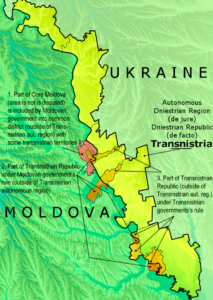
In 2006, the first President of Transnistria, Igor Smirnov, held a referendum on his country’s future, offering a choice of re-absorbance into Moldova or independence that would lead to the country being taken over by Russia. The Russian option won, although not everyone is convinced the vote was fair. Many suspect the votes were tampered with; Russia is not without previous form in such activities, after all. Indeed, it’s clear that Russia interferes heavily in day-to-day affairs, simply to retain control and to continue to exclude others. It’s like a complicated game of chess with Putin constantly moving the pieces to more advantageous squares whenever nobody is looking. Take the supply of gas, for instance.
We must not forget, of course, that Transnistria, as a state, does not enjoy widespread recognition. It broke away from Moldova in 1990, since when it has been regarded in many quarters as “a Russian outpost”. Moscow would like very much to force (if persuasion fails) Transnistria and Moldova to reunite. Gas supplies to the place were cut off in January, because Ukraine had decided to prevent the transit of Russian gas across its territory. Thus, the breakaway “republic” was left without heat, without fully functioning public transport and without power for its relatively few industries.
I’m afraid we just have to accept, it seems, that Vladimir Putin is not a very nice person. We also know that Transnistria, a place bright with Russian flags, full of statues of Russian Tsars and where the sound of people speaking in Russian can be heard all over the place, is fully dependent on Moscow’s whims.
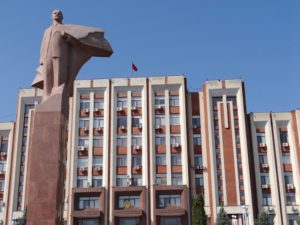
The country (if you can call it that) remains loyal to the Kremlin in everything (it doesn’t have much choice in truth). Russia doesn’t distinguish between Transnistria and Moldova. It also – through Gazprom – supplies gas to the left bank of the Dniester River (Transnistria, in other words) free of charge, as it has done since the end of 2024, whilst continuing to charge people and industry on the other side of the river – the rest of Moldova, in other words – for all its gas supplies. It’s an interesting and effective policy for Putin: “support Russia and Russian policies or freeze to death in a lifeless land without light, energy, work or transport.” It would have been possible for Gazprom to continue its supply of Russian gas by sending it through Turkey, which had expressed a willingness to serve in this way, but Russia chose not to accept that offer. There was nothing in it for Moscow. There is the little matter of debt, however, and entangled with that is some disagreement over the amount owing.
There was an interesting and instructive headline on the Carnegie Politika website: “Moscow Sees Transnistria Gas Crisis as an Opportunity to Wreak Havoc in Moldova”, an activity that would seem to be a hobby for Putin. With a ground area of 13,068 square miles which equates to just a little over 33,845.96 km2, Transnistria makes an ideal sort of playground for a power-mad despot like Putin. According to EuroNews, Transnistria will receive gas from Russia, but as “humanitarian aid,” which would seem to underline the “kindly” and “generous” aspect of it all, (rather like putting money into a beggar’s hat) while the rest of the country remains cut off from Moscow’s supply line, according to the Kremlin-supporting separatist leader, Vadim Krasnoselsky.
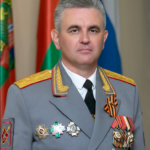
It’s easy to forget (or ignore?) the fact that we’re talking here about people’s lives, even their survival. Such things simply don’t seem to interest Putin. It’s the politics that matters, not the survival of ordinary people. In 2016, the European Court of Human Rights ruled that Transnistria could only continue to exist because of Russian support: military, economic and political. If Moscow says “jump” the correct response from Transnistrians would be: “how high?” It’s a situation that inevitably complicates the issue of Moldovan and Transnistrian indebtedness to Moscow, the details of which are disputed.
This is further complicated by the fact that Russia still regards Transnistria and Moldova as a single entity, although it supplied gas to Transnistria, on the left bank, for free whilst it continued to charge for gas going to the other side, which counted as the rest of Moldova. Effectively, Russia stopped charging Transnistria for the gas arriving from Gazprom, although Moldova, on the opposite bank was supposed to pay.
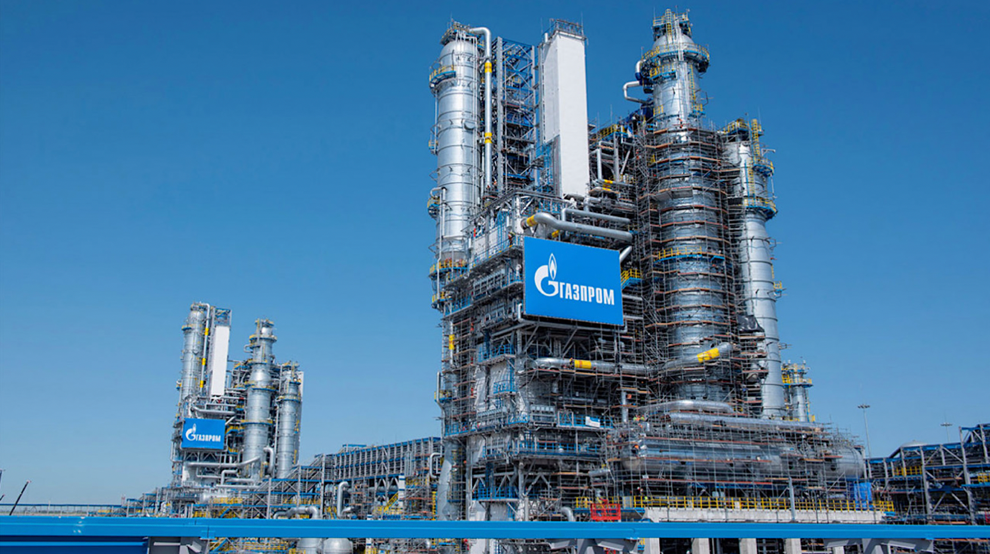
At the point at which Transnistria stopped paying, its debt for gas had reached an alleged $11.1-billion (€10.2-billion), while Moldova owed some $709-million (€651.27-million), a figure disputed by Chișinău, which admits only to a debt of $8.6-million (€7.9-million). Chișinău stopped paying for Gazprom’s gas in 2022. The amount theoretically owed by Transnistria reached some $11.1-billion (€10.93-billion), but payment is never discussed. In economic terms, Putin always plays a very odd game whose sole aim seems to be to deliver total control to him. No surprises there, then. It is odd, though, that Russia effectively subsidized Transnistria through supplies of free gas, as well as heavily discounted gas to the public at large, as well as to various enterprises and services. With the Moldovan State Power Plant established in Transnistria, it can supply gas free of charge to its own immediate area and at a sizeable discount elsewhere, earning it valuable foreign currency. It provides a bonus for both Chișinău, Moldavia’s capital and Tiraspol, Transnistria’s capital. The cutting of gas supplies is blamed by Moscow on Kyiv (of course) and also on Chișinău, which did not wish (or was unable) to settle its debt. It’s unlikely it would have been able to pay in full,certainly.
As seems inevitable in this and similar regions, the current difficulties are the result of Putin’s never-ending ambitions. He’s an ambitious, one might even say greedy, man. He has always been someone who would seize upon the weaknesses of any country (or pseudo-country) in his vicinity. With Transnistria, he finds a perfect foil for his limitless ambitions: problems with politics, military issues, economic issues and humanitarian ones, including differences of language. It must have appeared like a political playpen to him. What’s more: underneath all these issues there was an economic core to exploit. It was linked to Moldova’s perception of Transnistria as a transit route for goods, raw materials and money. That’s what has made it irresistible to the greedy, and there was no shortage of such people following the breakup of the old Soviet Union. The region’s problems were listed by the first Vice-Chair of the government of Transnistrian Moldovan Republic (TMR), V. Sinev (first names seem to be in short supply there): “During these years,” (1990 and the years shortly following) he said, “we experienced real upheavals: denomination of Soviet money; not quite successful transition to the country’s own currency and hyper-inflation.” Salaries tumbled, including those of civil servants, while production and output fell. After a decade of dubious development, Transnistria had at least established a legal basis for its shaky economy, along with legal norms for the economy, for banks, for monetary circulation, taxes, regional systems of production, social infrastructure and foreign economic relations. It was clearly a lot of very hard work. It succeeded, too, although question marks remain over the viability of the TMR economy now and into the future.
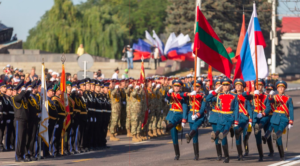
Both sides sometimes forget how much the other side is needed. One contemporary statement said: “The Republic of Moldova needs Transnistria for its survival as badly as air, because Transnistria has a still-functioning and relatively strong industrial complex.” That doesn’t suggest a merger of the two entities. “Transnistria, with its industry and agricultural sector should not become a magic wand for those who turned (the) once flourishing Moldovan Republic into a poverty-stricken country of semi-colonial type.” The statement, made in October 2001 went on bluntly to refute the ideas of a merger. “We assert that, from the economic point of view, there is no need to unite the TMR and the RM, and moreover to place it under Moldovan authority. If we do it, the TMR will live even worse than it does now.” That would, of course, be terrible, because the situation there is not a happy one. As it is, recession continued throughout that decade, and it became increasingly clear that Transnistria, Moldova and other post-Soviet economies remain unstable and have yet to overcome a lingering depression.
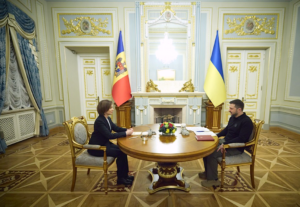
Other countries and regions that have found themselves to be “objects of desire” for power-hungry politicians have been able to boast geological riches of one sort or another. In Transnistria’s case, however, there’s not much there. There are some rare exposures of pre-Neogene rock along the Dniester River and the area lies on top of East European platform rocks from the pre-Cambrian era, including granite, gneiss and gabbro from the Archean and Palaeozoic rocks which lie under Triassic and Jurassic conglomerate, sandstone, siltstone and limestone, all of which lack much in the way of fossils. In case you’re unsure about exactly what the Neogene era was, it was a period of 20.45 million years, beginning 23.03 million years ago and lasting until the start of the current Quaternary period, 2.58 million years ago. It was a time of cooling temperatures, while the resulting changes in plant life inevitably had a knock-on effect for wildlife, too. Horses, for instance, developed longer teeth to cope with the increasing spread of grasses and grasslands (and lack of alternative food), and the grass itself of course was less nutritious, so some animals became extinct. Predators had to become faster to catch their faster-moving prey (horses can move at quite a speed), while some animals evolved to have more than one stomach. They were the ruminants, who could extract more goodness from the grasses. That’s how sheep, camels and giraffes (among other similarly-equipped creatures) came to evolve. The entirety of the Moldovan countryside is overlaid by Quaternary deposits laid down over the last 2.5-million years. In other words, it’s pretty dull and not much worth taking your geologist’s hammer to. I haven’t used mine in years, despite such Earth-shattering events as continents colliding and mountains rearing up (the Himalayas among them), while apes and hominids also evolved who would one day take over the whole planet.

You can go there for a holiday, if you fancy the idea, with the place being advertised on-line as a kind of trip back in time to the Soviet era. The advertisement cites it as “the place where the old USSR is still alive and flourishing”. Polish up your hammer and sickle. How can potential holidaymakers resist such a place? Actually, it would be very interesting, I think. After all, while media attention has mainly focused on NATO member states, it’s easy to forget such places as Georgia and, of course, Moldova, where Russian influence is strong. Given Putin’s seeming ambivalence towards Transnistria it’s quite hard to understand, although there remain some 1,500 Russian troops based there and there have been some odd events, such as the fatal shooting of a top opposition leader, together with the shooting down of a military helicopter, as well as explosions at a radio facility not far from the border with Ukraine.
Transnistrian officials have alleged that it was a Ukrainian drone that brought down the helicopter, but Moldovan officials say it was a Russian action designed to heighten tensions. In that case, it clearly worked: the Transnistrian Congress has appealed to Moscow for “protection” against the Moldovan government. Unnecessary? I’d have thought so, but it’s amazing how much inexplicable nonsense passes for diplomacy and common sense in such places. Interestingly (and, perhaps, disturbingly) Moldova views Ukraine as its first line of defence against Russian aggression. Russian elites, meanwhile, have called on Moldova to “avoid Western Influence”, even referring to the autonomous region as “the next Ukraine”. I suppose we must simply assume that Putin and his fans and followers are really looking forward to a large-scale war, with lots of shattered human bodies to see. I have no idea why unless they simply want to take over the world, ending free speech and freedom of action at a stroke.
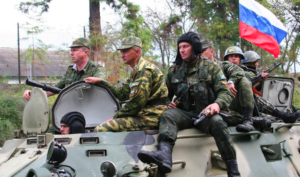
The odd thing is, to me, Putin’s seeming determination not to absorb Transnistria. Unless it’s just a pretext to keep Russian troops in a state of high alert beside the border, perhaps in the hope that they will see action. For Moldova, Ukraine’s continued independence is vital. The idea that Transnistria needs Russian protection from potential Moldovan aggression is clearly laughable. On the other hand, if Russia were to invade (or want to invade) Moldova, it would have to secure the city of Odessa and Ukraine’s Black Sea coast. The Moldovan Foreign Minister, Mihai Popșoi has said that as long as Ukraine holds firm in the belief that Ukraine has the support of the West, Moldova would stay safe. We have to remember the history of the area: following the collapse of the old Soviet Union, a war began between Transnistria and what is now Moldova. That ended in 1992, with Transnistria claiming independence from Moldova. In 2006, 95% of Transnistrians allegedly voted for their country to become part of Russia. Few people outside Russia or Transnistria believe it was a fair vote, although it may have been. Politics in that area can be very odd indeed.

The plain fact is that people develop a fervent, if sometimes irrational, love for their home country, which thereafter can do no wrong in their eyes. There is no serious doubt that Putin’s adoring followers believe they’re displaying patriotism, showing the world just how much they love their country. The original creator of the phrase “My Country, Right or Wrong, was a US naval officer called Stephan Decatur, famous for various courageous exploits, including the burning of an American frigate, the USS Philadelphia, which had fallen into the hands of pirates. Even the famous British admiral Horatio Nelson was full of admiration.
Decatur first uttered the famous expression in a toast on his success in getting a peace treaty with Algeria. “Our country!” he is alleged to have said, “In her intercourse with foreign nations may she always be in the right; but our country, right or wrong!” These days, such unalloyed patriotism might be seen as needlessly nationalistic, even bombastic, but the sentiment is, at least, clear and to the point, if somewhat to the political far right.
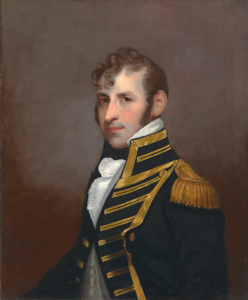
The expression was rendered more reasonable and less jingoistic by the British writer G.K.Chesterton, who wrote in his book “The Defendant” that: “My country right or wrong is a thing that no patriot would think of saying except in a desperate case. It is like saying ‘My mother, drunk or sober’.” The English novelist Patrick O’Brian wrote in his seafaring novel “Master and Commander” that if the famous expression means “my country is always right, which is imbecile” (one assumes he meant “imbecilic”). Looking at current events and thinking in the Transnistria-Moldova theatre if politics suggests that the “imbecile” explanation has merit. But that would also mean that President Putin is an imbecile, wouldn’t it? Who am I to argue?
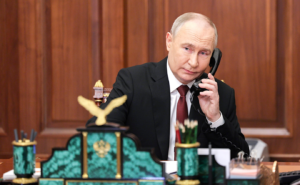
There are certainly some politicians over there who want to keep the pot of warfare nicely simmering, ready to boil over at any moment. Whether anyone’s country is right or wrong would then appear irrelevant. We’d be deep in a war that some people (naming no names) seem keen to provoke. I hope those same people will be happy to go and visit the wives, sweethearts, children and parents to the many, many victims and explain how (if?) the world is a better place for their sacrifice. The irony is that even if we avoid a war in the present time and on the present pretexts, one will inevitably happen somewhen because somebody with power wanted more. Perhaps that person can then explain exactly how the world is now better, fairer, safer or better run than if the war had never happened. I would bet that they can’t, at least not convincingly.

